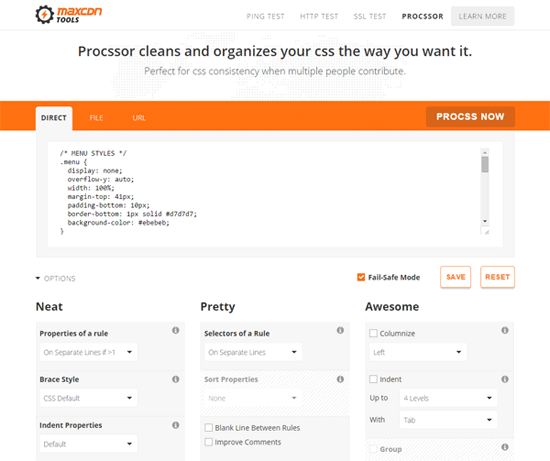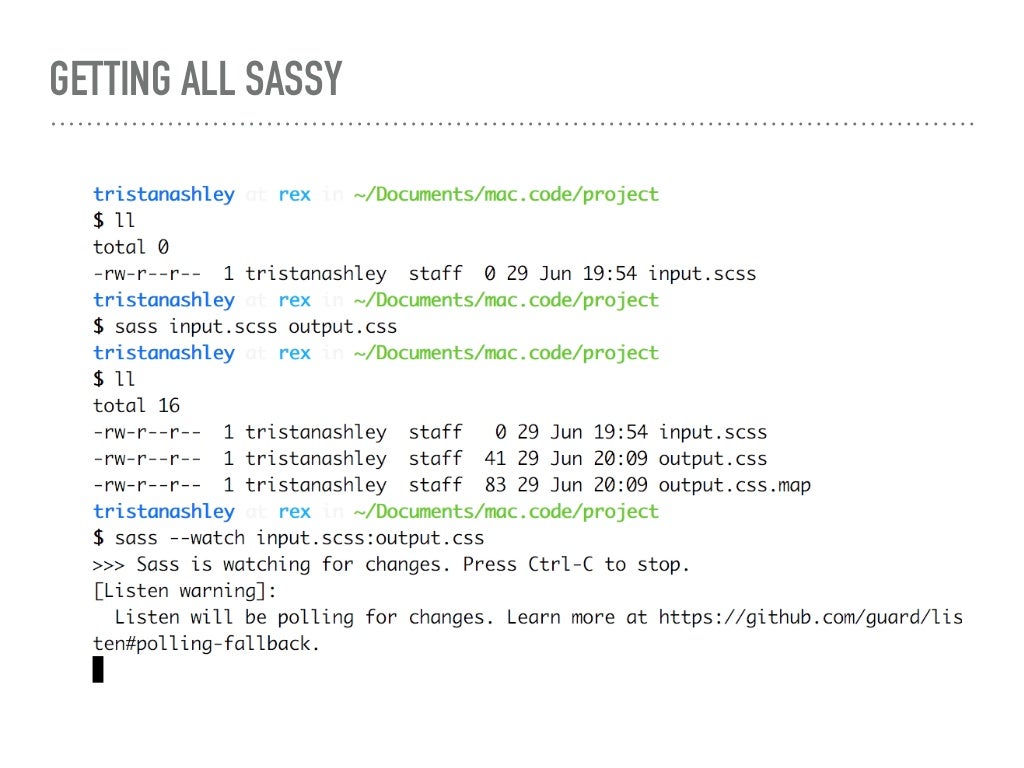

To ease, fasten and clarify the CSS development and to ensure developers don’t have to rewrite the same CSS twice, CSS preprocessors were developed.

The well-known DRY principle (Don’t repeat yourself) isn’t really applicable to CSS. Therefore CSS documents consist and consisted often of thousands lines of coding, whereby major part of the coding is overlapping. Besides the website’s layout, various HTML elements can be styled separately. The large number of different CSS properties opens a new world of CSS opportunities. Besides style, it is also possible to develop CSS animations which, for years, was only possible by means of programming languages like Javascript. Nowadays we are dealing with CSS version 3 and all styles of a website are arranged by means of CSS. Let’s take a big leap forward to the present day. Nevertheless it was only in December of the same year, when CSS 1 was introduced by W3C, one could start managing a website’s content and a website’s styles separately. HTML 3.2 was released on the 5th of May 1996. The true web designer was born after the introduction of HTML 3.2 because it became possible to add and use different backgrounds, colors, various font sizes and several styles to your website which for the first time prioritized the actual website’s presentation. It laid the true foundation of website development. Soon developers noticed creating a table in a table and again in another table (and so on), a website could be developed by means of various sections providing the developers a website lay-out control. The objective of tables was to present data in a clear and ordered way. The introduction of HTML 3.0 (an HTML version which has never been officially released) meant a world of difference because tables were introduced for the first time. At that stage designing a website was still very restricted to basic features and adding columns for example was even almost impossible. Some years later HTML 2.0 signified the introduction of images. Where it all began The history of HTMLĪt the start of the Internet there was only text (HTML 1.0). Why use a CSS preprocessor? (advantages and disadvantages) ĬSS preprocessors used by 61 front-end development experts.ġ.
#Css procssor code#
Here’s a simple code showing the difference between the syntax of SASS and SCSS.The 5 best CSS preprocessors (according to 61 experts) However, the reverse action is not possible. Every valid CSS file is also a valid SCSS file – it will work after changing the file extension from. Just like CSS, SCSS uses curly braces and semicolons.

SCSS got its name 'SASSy CSS' because it creates more CSS features and still maintains its core features. SCSS, on the other hand, was developed to bridge the gap between CSS and SASS syntax. SASS's syntax adopted Ruby's style, strict indentation, no semicolons, and no braces syntax. There are, however, certain differences between them. SCSS syntax is like SASS and has the same functionality – to extend CSS features. They both have the same pre-processor, and that SASS is a syntax, and a pre-processor is one reason why SCSS and SASS are often confused together. SASS, its own syntax and pre-processor, and SCSS (SASSy CSS) is another syntax of the SASS pre-processor. If you have good knowledge of CSS, working with SASS won't be a problem at all. It is fundamental and takes on the form of CSS. If you are wondering or scared about using SASS because it is a programming language, you shouldn't. It extends CSS's functionality by bringing with it the paradigms of traditional programming like functions, loops, variables, nesting mixins, inheritance, and so much more. Ruby – written in SASS – frequently referred to as 'CSS with Superpowers', is a basic programming language. Now, a developer writes in SASS syntax, but the output is compatible with all CSS versions and works well with any website. Its primary purpose is to cover up the flaws of standard CSS and extend CSS's syntax by adding new instructions. SASS (Syntactically Awesome Style Sheet) is the middleman between regular CSS and the compiler. It receives input in a particular language, processes it, translates it, and sends out output in another language’s syntax. Using a CSS pre-processor is the solution for many frontend developers, of which SASS is the most popular and preferred.Ī pre-processor is a program that acts as a sort of middleman between a client program and the compiler. Debugging large CSS sites can become a nightmare because of this. They tend to be repetitive, long, complicated, and messy. It can be very cumbersome writing CSS code when doing it for a large site.


 0 kommentar(er)
0 kommentar(er)
